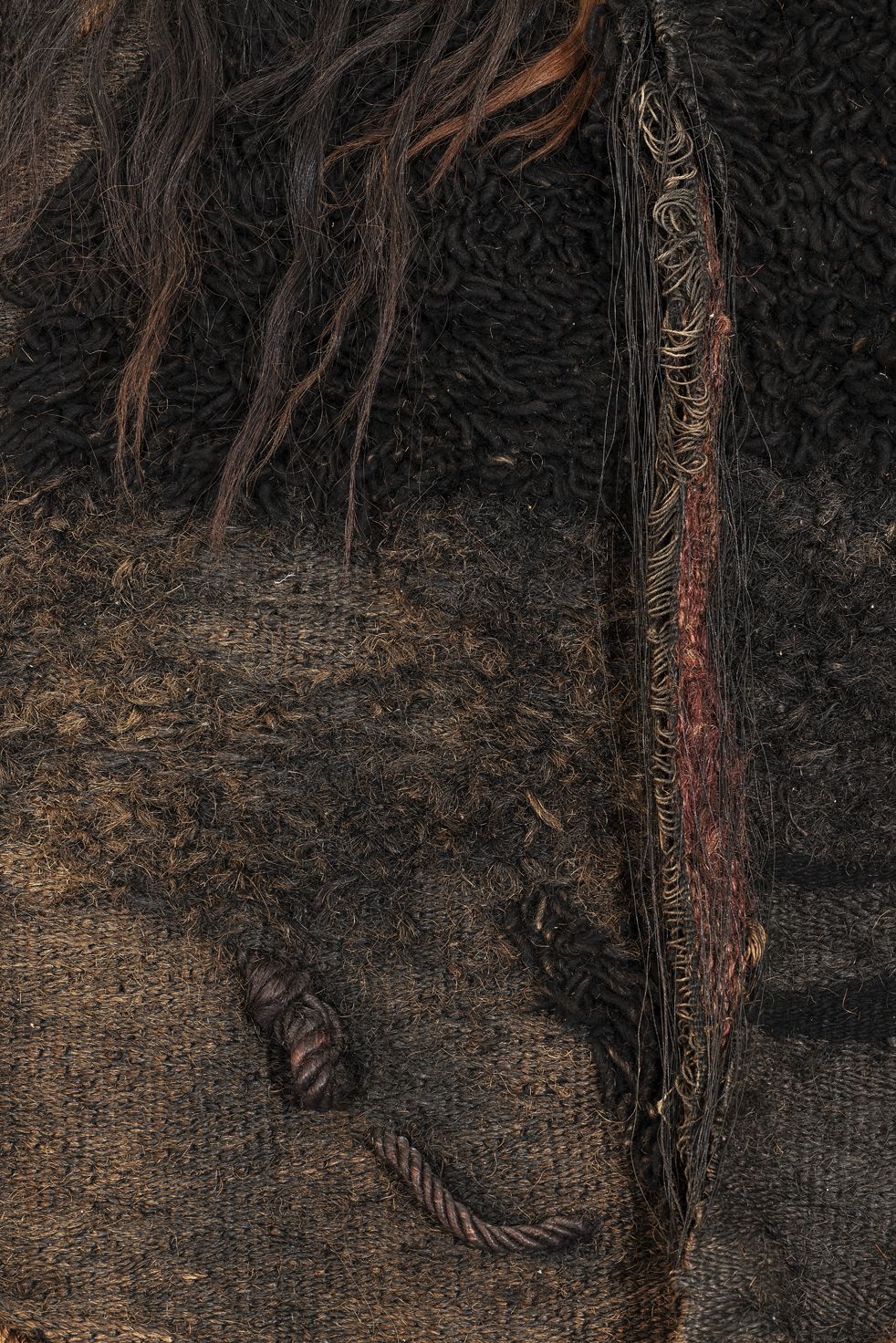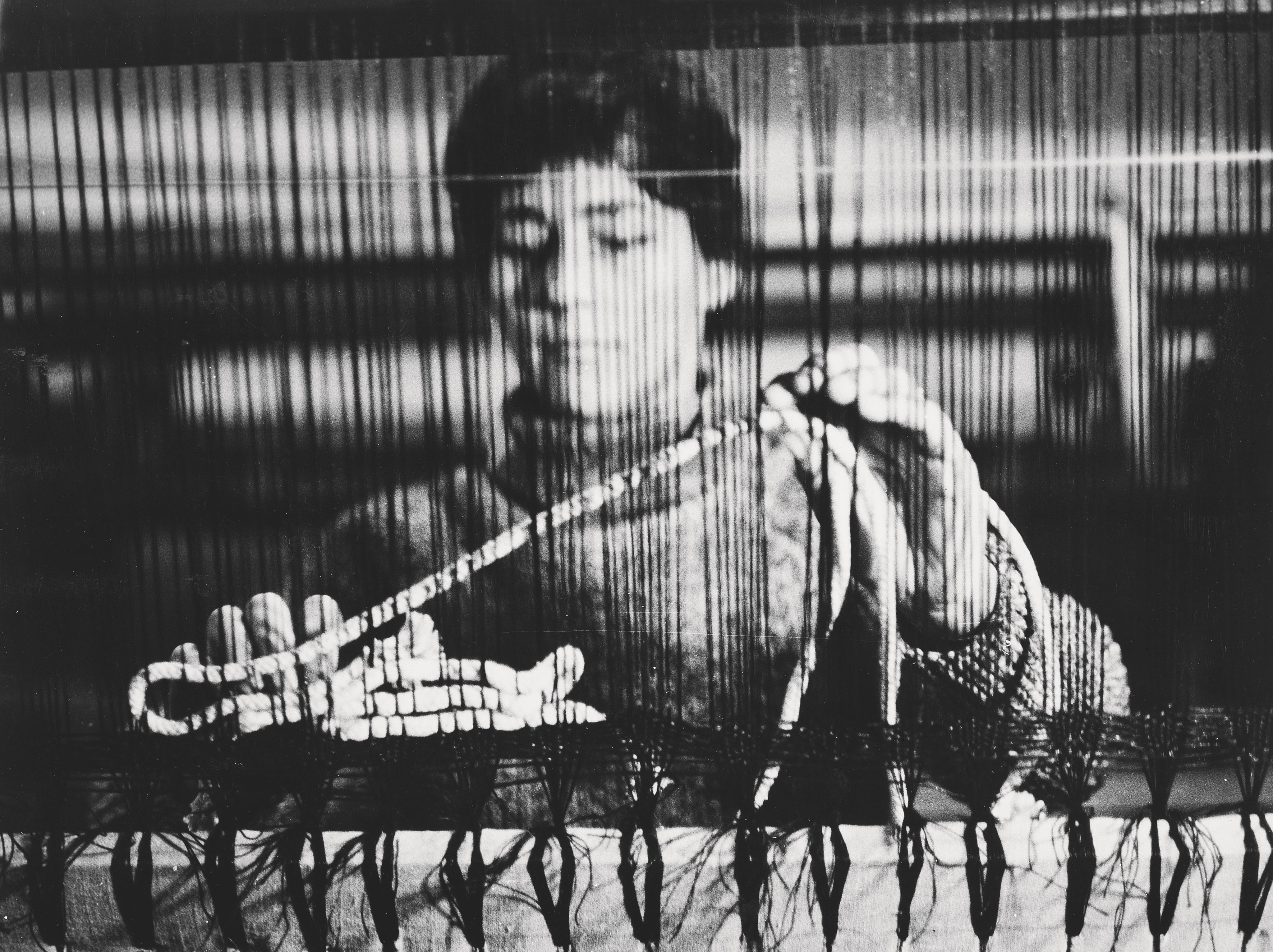The Curatorial Threads of Professor Mary Jane Jacob

Installation view of Magdalena Abakanowicz: Every Tangle Of Thread And Rope. Image courtesy of Tate Modern.
Installation view of Magdalena Abakanowicz: Every Tangle Of Thread And Rope. Image courtesy of Tate Modern.
by Rowan Beaird
In the vast, stark spaces of London’s Tate Modern, massive sculptures made of industrial sisal and rope hang from the ceiling—some in deep shades of crimson, saffron, and orange; others evoking a dark forest in their rich complexity of browns and blacks. This is Magdalena Abakanowicz: Every Tangle Of Thread And Rope, an exhibition co-curated by Professor Mary Jane Jacob.
This exhibition, which has received rave reviews, is a remarkable bookend to the artist’s first major exhibition stateside, which Jacob curated four decades earlier. “You don’t imagine you’re going to work with the same artist all your life,” Jacob said. “But my first encounter in this artist’s studio,” during the Communist regime in Warsaw, “led to a lifetime of rewards.”
Jacob first encountered Abakanowicz when she worked at the Detroit Institute of Arts. Encouraged to look at the emerging fiber art of the 1970s by a local enthusiast whose interest had been dismissed by other curators, Jacob discovered Polish artist Abakanowicz. “I always say to students, ‘You never know where the opportunities will come from,’ and this one was totally unexpected,” Jacob said.
Jacob convinced the museum to let her visit Warsaw while she was taking a courier trip to Rome. She offered Abakanowicz a show on the spot, even though—as a junior curator—she had little authority to do so, but back home she successfully pitched the idea to the museum. Later, working as chief curator to the Museum of Contemporary Art Chicago (MCA), she also brought the exhibition to Chicago in the early 1980s.

Czarna (detail), 1966, collection of the Art Institute of Chicago, purchased with funds provided by the Abakanowicz Arts and Culture Charitable Foundation. Image courtesy of the Abakanowicz Arts and Culture Charitable Foundation. Photo: Norbert Piwowarczyk
Czarna (detail), 1966, collection of the Art Institute of Chicago, purchased with funds provided by the Abakanowicz Arts and Culture Charitable Foundation. Image courtesy of the Abakanowicz Arts and Culture Charitable Foundation. Photo: Norbert Piwowarczyk
“To propose the work of a woman who was weaving in Warsaw was not a cool topic at the time,” Jacob said. “But much to the commendation of the MCA board, they were not just following trends.” This became the museum’s largest show at that point in time, encompassing both its Ontario Street building and the Chicago Cultural Center.
In the years following, Abakanowicz’s star rose as her sculptural explorations expanded, and she became one of Poland's most internationally acclaimed artists. As Jacob’s career evolved, too—she became chief curator at Los Angeles’s Museum of Contemporary Art, curated public art, and wrote many critical texts—she and Abakanowicz remained close.
“Every time I thought I was moving away from Abakanowicz’s work, a new connection was found. Even with Culture in Action, which in the early ‘90s in Chicago sparked socially engaged art practice, she offered reflections on the postwar period when she and other artists worked with local people in villages, and it would all connect.”

Magdalena Abakanowicz. Image courtesy of Tate Modern and the Estate of Marek Holzman
Magdalena Abakanowicz. Image courtesy of Tate Modern and the Estate of Marek Holzman
This relationship led to Jacob’s appointment as the co-artistic director of the Abakanowicz Arts and Culture Charitable Foundation. In that role, she proposed the Tate exhibition, which became six years in the making due to the COVID-19 pandemic. Jacob says ultimately this delay was a gift. “We were able to take the scholarship much further in the process and to learn more about the work and the artist’s early experiments with installation art. Thus, we could curate in a way the artist might appreciate, making the show a palpable, human experience for visitors.” The catalogue evolved, too, thanks to the major contributions of a narrative chronology by Jenny Dally (MA 2020) and a lead essay by SAIC Visiting Artist Magdalena Moskalewicz, which challenges assumptions about Abakanowicz’s work.
During the last stretch of preparation for the exhibition in 2022, Jacob was living in Warsaw, where she keenly felt the Russian invasion of Ukraine. She knew that, if Abakanowicz were alive—the artist passed away in 2017—she would seek to support Ukrainians in some way. “Having experienced the outbreak of World War II in 1939 at the age of nine and its aftermath as a student, Abakanowicz developed a profound concern for humanity,” Jacob said.
After connecting with Rebecca Taylor Duclos, a former SAIC graduate dean who now works as a professor at Concordia University in Montreal, they established UAx: a program to support art students in 15 Ukrainian universities through mentorship, knowledge exchange, and emergency scholarships. This program is being undertaken by the European League of Institutes of the Arts in partnership with 30 member schools and is funded by the Abakanowicz Arts and Culture Charitable Foundation.
In addition to the Tate show, this program is yet another example of how Abakanowicz’s legacy will endure. As Jacob said, “An artist’s work and creative being can have a resonance far beyond their lifetime.” ■
{{[http://www.saic.edu/news/facultystaff]FACULTY & STAFF}}
